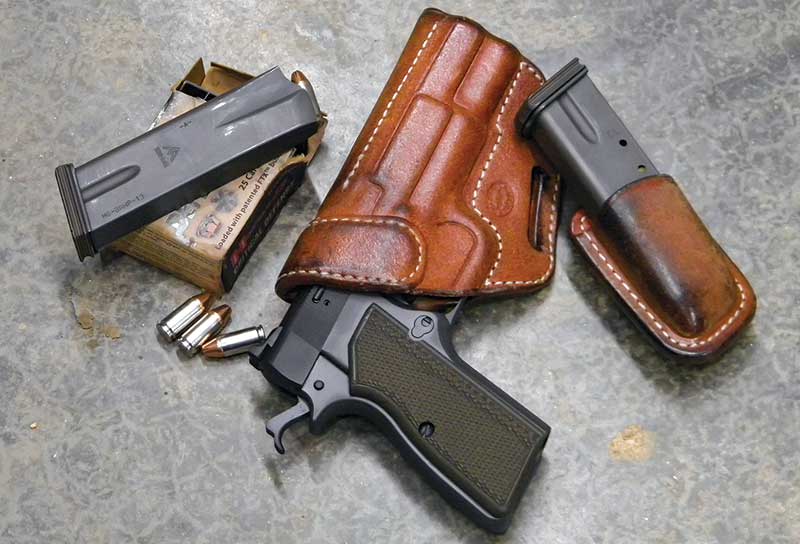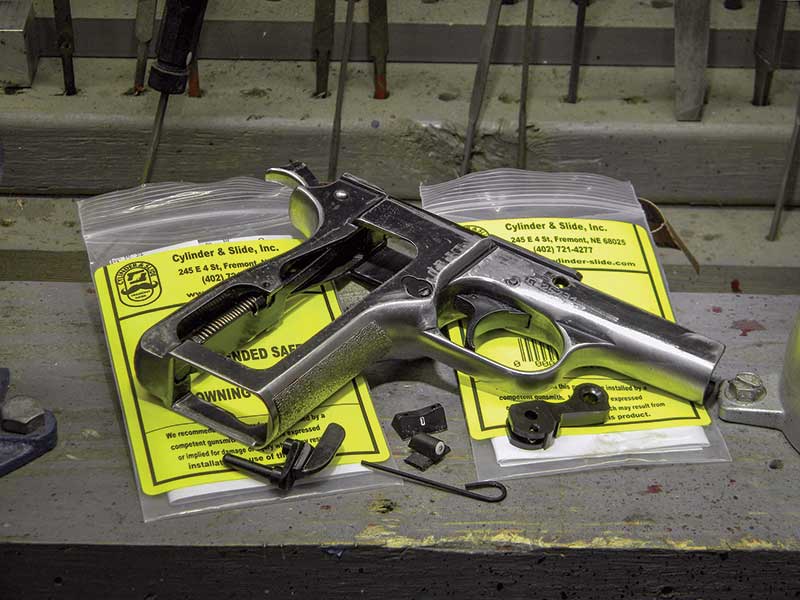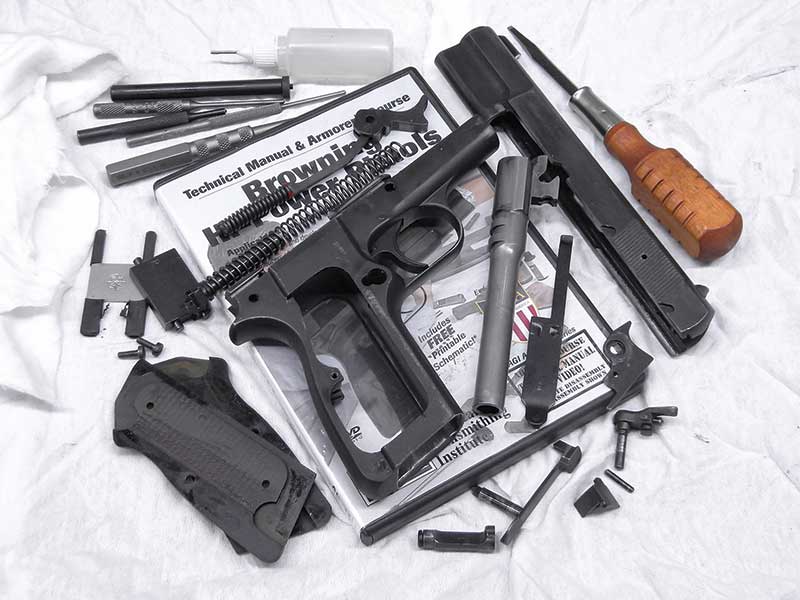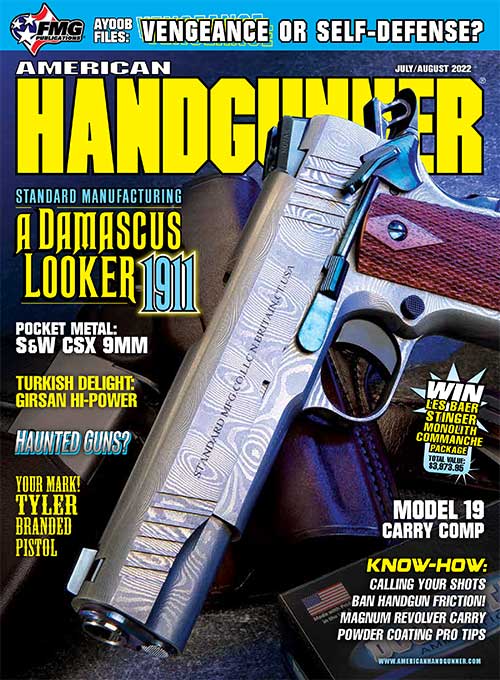Tactics and Training: Hi-Powers for Self Defense?
While many shooters prefer fantastic plastic pistols — they’re a good choice — others think, “Steel is real.” I grew up with revolvers, 1911s and Browning Hi-Powers — all “old” steel designs. The Hi-Power was never as popular in the States as the 1911, but for most of the free world, F.N.’s Grande Puissance was “the pistol.” Recently, Hi-Powers have garnered more attention with the release of three new versions of the iconic design — Springfield’s SA-35, the Girsan MC P35, imported by EAA and a modified, modern version of the Hi-Power by FN America. This begs the question: Is the Hi-Power — originally a military weapon — suitable for self-defense? How does it stack up against modern, striker-fired handguns?
There’s no question Hi-Powers are reliable. John M. Browning designed it based on specific requests from the French military. Although the French declined, it was brought to market in 1935. Since then, Hi-Powers have been effective in every application across the globe. It’s a proven design, and a well-maintained “Browning” will serve well for self-defense.
Hi-Cap Expert Pistol?
Yes, the Hi-Power is a single-action pistol. It’s carried “cocked and locked” with a round in the chamber, hammer cocked, and thumb safety engaged. Proper manipulation of the Hi-Power and 1911s requires constant thumb safety operation. As you come on target, the safety is disengaged. After firing, you come off the trigger, off the target into an appropriate ready position and engage the safety, placing the thumb on top of the safety where it’s ready for the next shot.
This makes you safe, ensures the safety is disengaged every time you come on target — a good habit — and serves as a “system check.” The safety won’t engage if the slide is out of battery — there’s a problem needing your attention. Compared to striker-fired designs without external thumb safeties, the Hi-Power requires a little more thought, training and practice. While not for everyone, for those willing to put in the time, the single-action Hi-Power is a reliable, safe design, ideal for concealed carry and self-defense.
A significant factor when choosing a pistol today is magazine capacity. Hi-Powers were the first “high-capacity” semi-auto pistol. The original double-stack magazines held 13 rounds, but those “in the know” only loaded 12. Today you can choose between reliable 13- or 15-round mags, FN’s new design holds 17 and there are 10-rounders for compliance in “restricted” states. All of these have more than enough capacity to qualify the Hi-Power for defensive use. Fill ’em with modern, defensive ammunition — which has evolved dramatically since 1935 — and you’ve got a contemporary carry package that’s more than accurate enough for its intended purpose.
New Tweaks on Old Design
An age-old, legitimate complaint about Hi-Powers is the trigger action. It was sometimes less than desirable but much like most military weapons. This is no longer a problem. Many newer generation Hi-Powers have smooth, crisp triggers, ideal for defensive use, right out of the box. A qualified ’smith, familiar with Hi-Power work, can tune older models or adjust for a lighter “target” trigger for competition-only pistols. A properly tuned Hi-Power has an outstanding trigger action, only surpassed by the 1911.
Another issue, especially in America, is the magazine disconnect. The pistol will only fire with a mag locked in place in the original design. Blame this one on the French. Do you leave it in place — not a good idea, in my opinion — or knowingly remove a “safety” device, opening you up for legal problems? Luckily, Springfield and FN have removed this feature from their new Hi-Powers. And who knows, with pistols being manufactured without this feature, maybe it will open up discussion about removing it from pistols that do it.
Ensuring the pistol properly fits your needs is critical. The pistol’s size and shape must be physically proportional to hand size; this may require some modifications or swapping out stocks. Sights that are “fit” for defensive applications must work for you in all lighting conditions. There are plenty of accessories and after-market parts for Hi-Powers to achieve these goals. Check with the folks at Cylinder & Slide. Plus, Hi-Powers are roughly 1/2″ shorter in length and 1/4″ smaller in height than a full size 1911 and about 7 oz. lighter. You’ll also find a variety of compatible holsters, magazines and pouches.
The “old” Hi-Power isn’t for everyone, but neither are 1911s or revolvers. But, for defensive use, it’s a proven design that more than holds its own against any other handgun. Plus, it’s a great way to connect with the past. Studying the history of the Hi-Power — manufactured and fielded by both Axis and Allied troops during WWII — reflects “modern” times and John M. Browning’s influence.
For more info: Cylinder-Slide.com, XSSights.com







